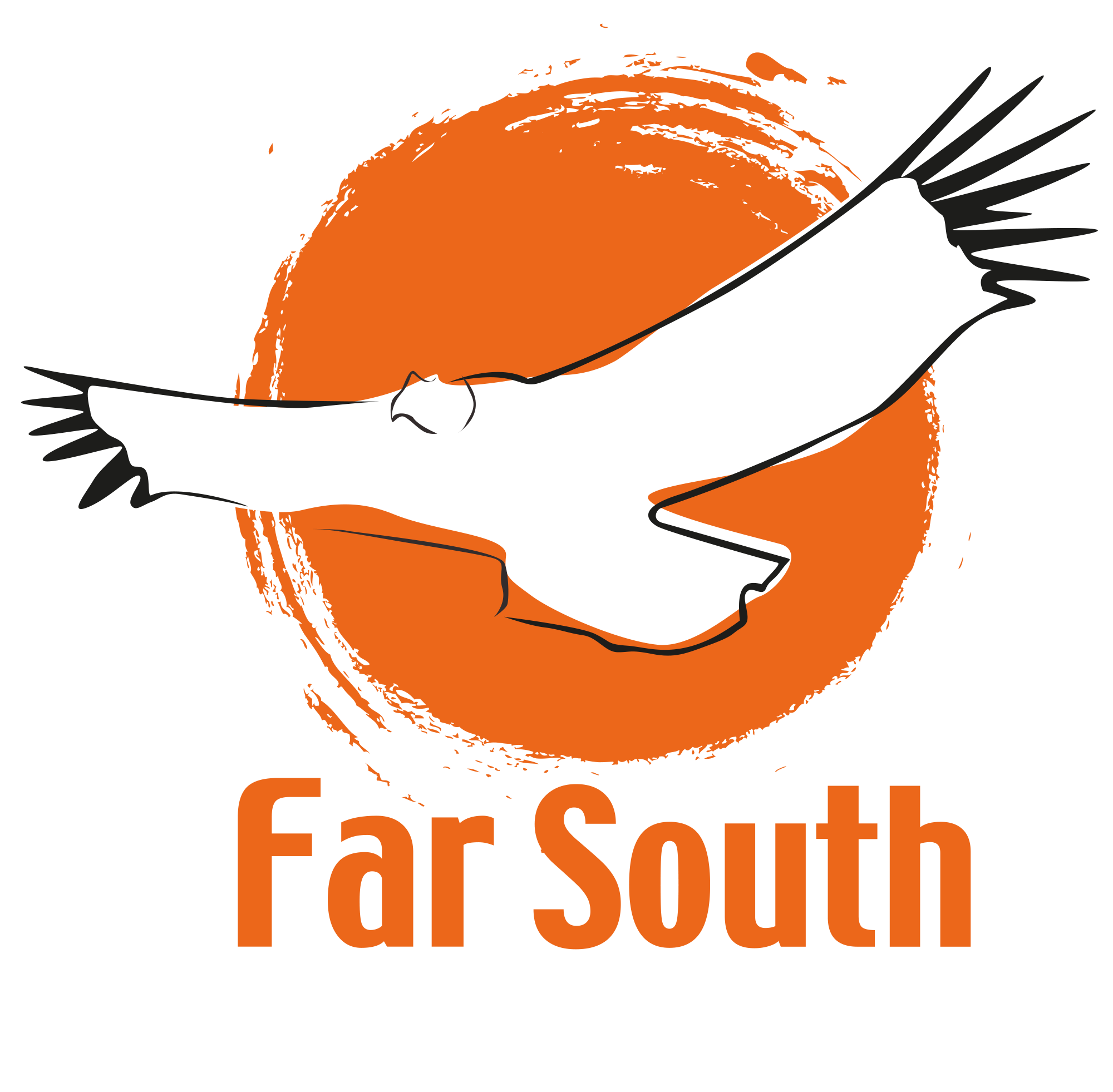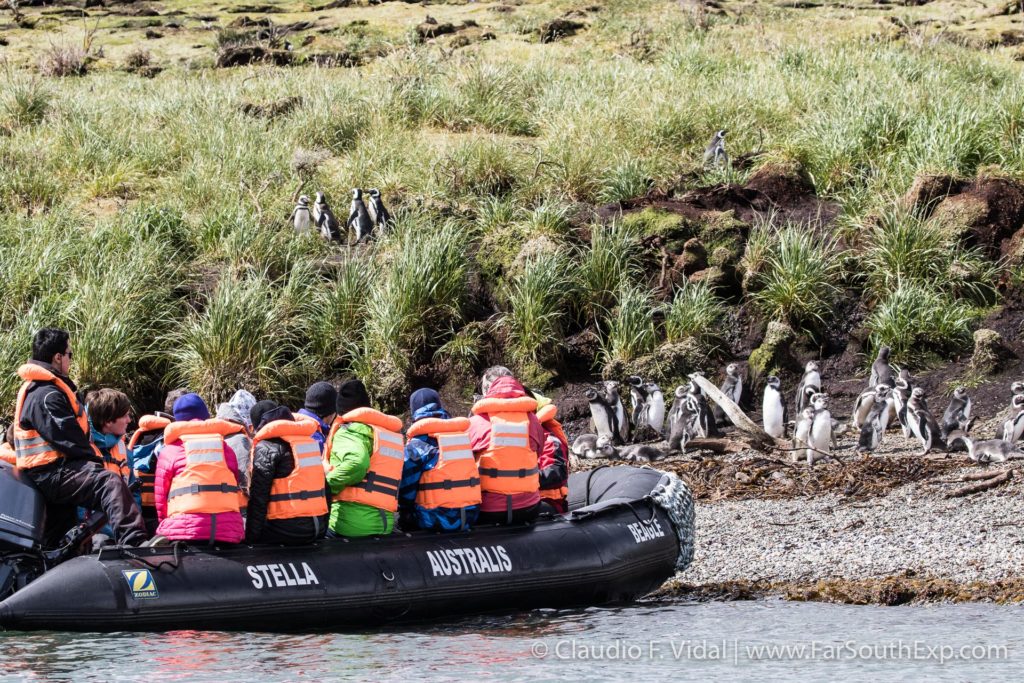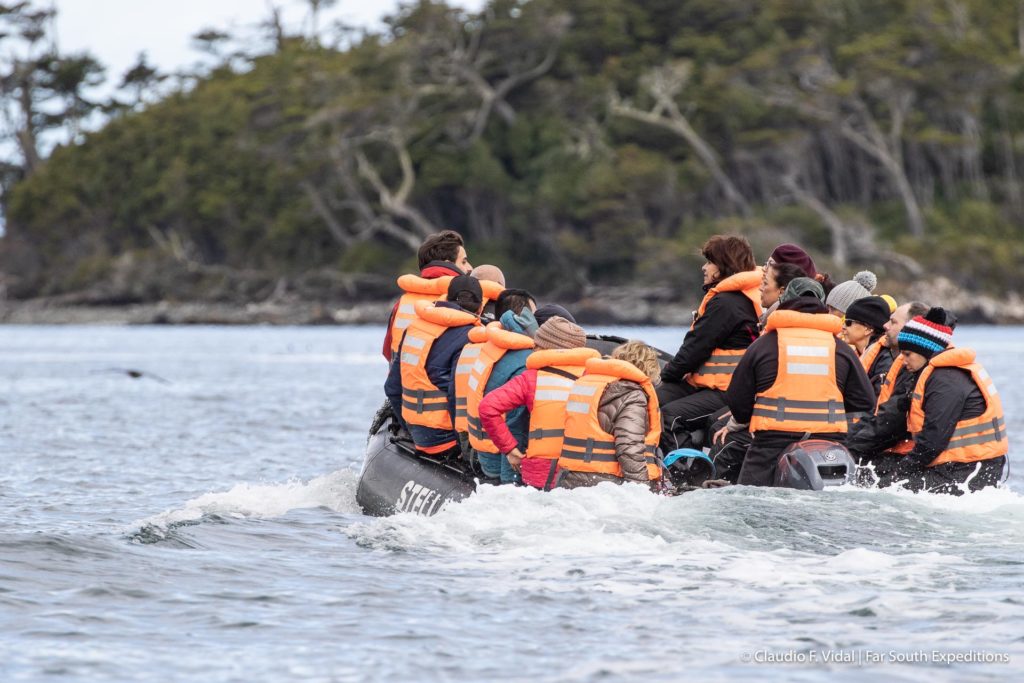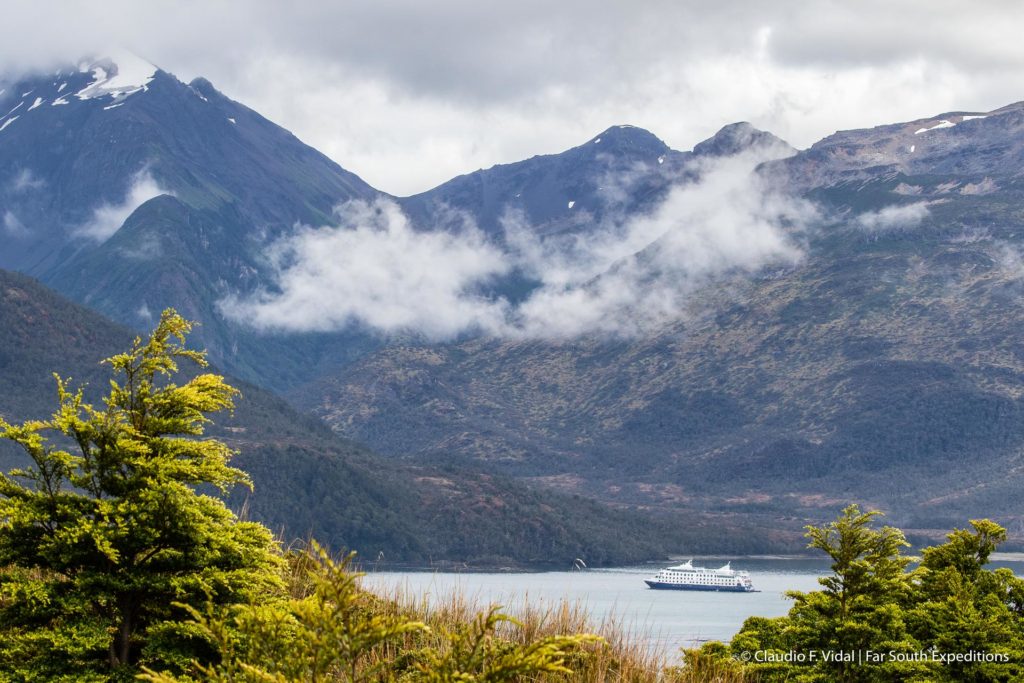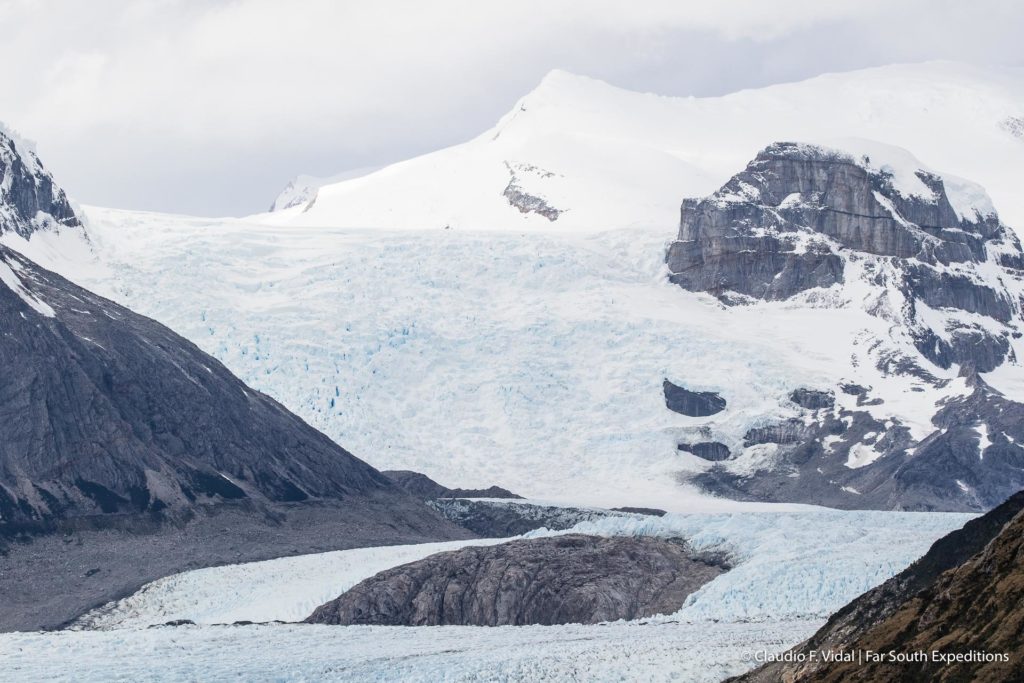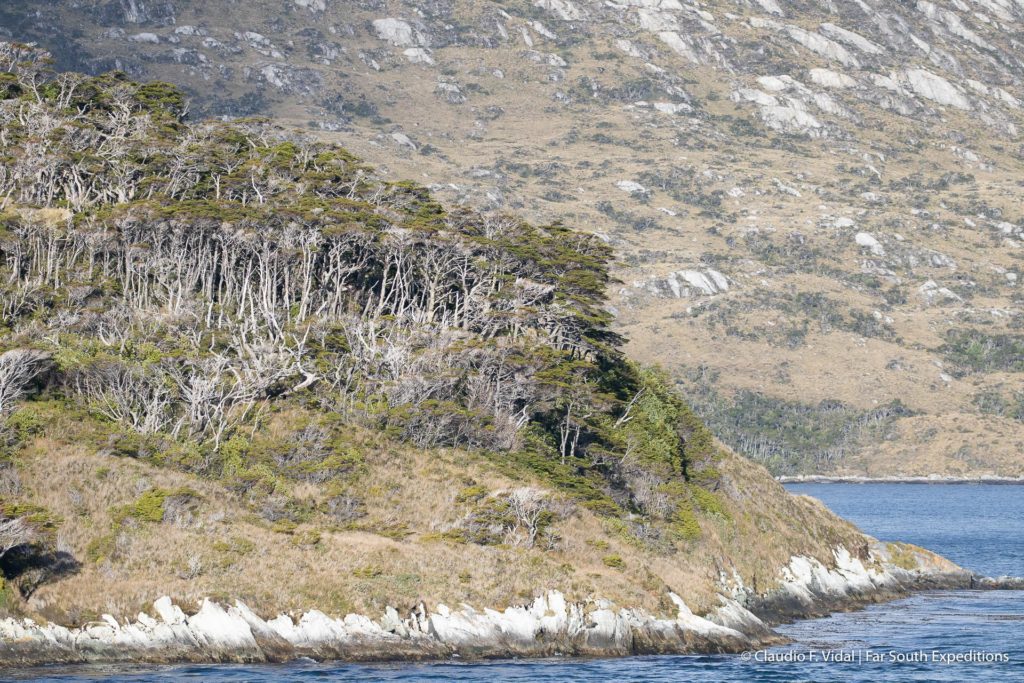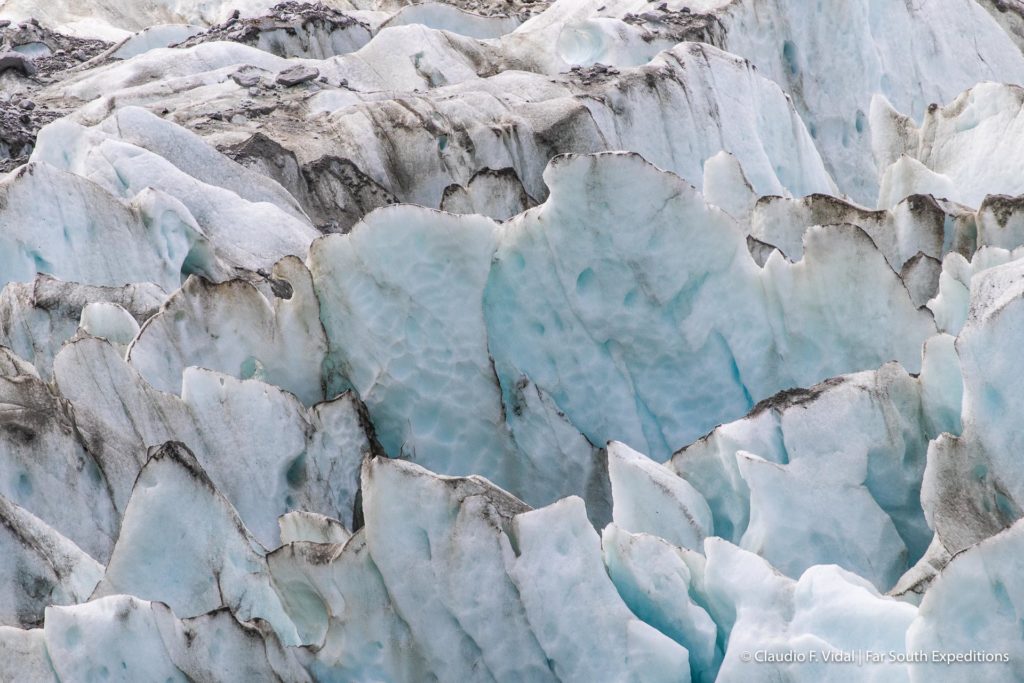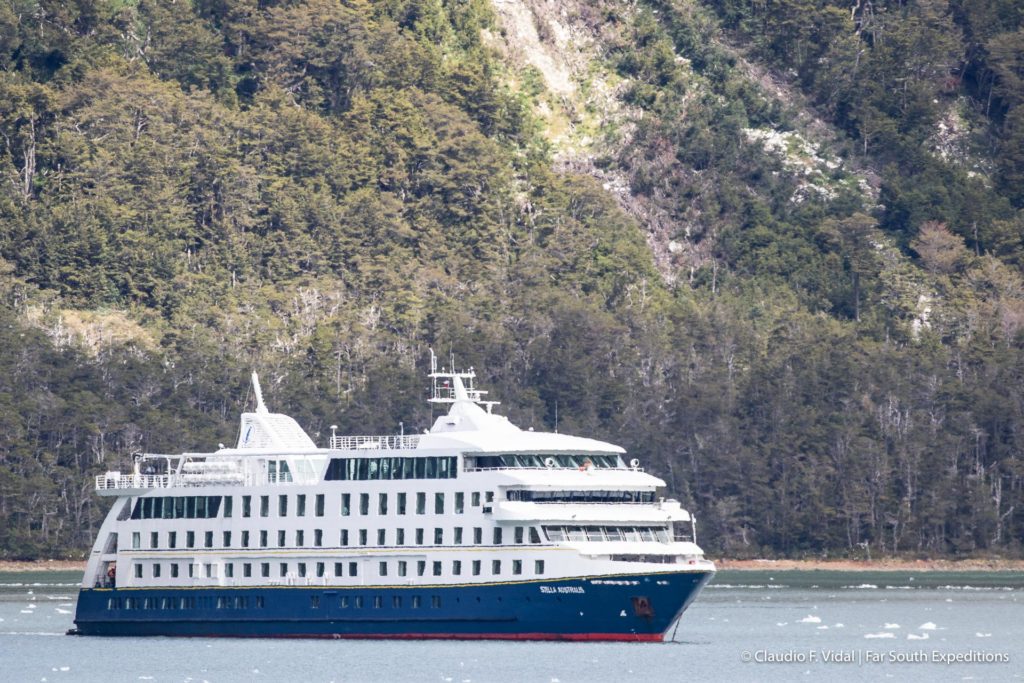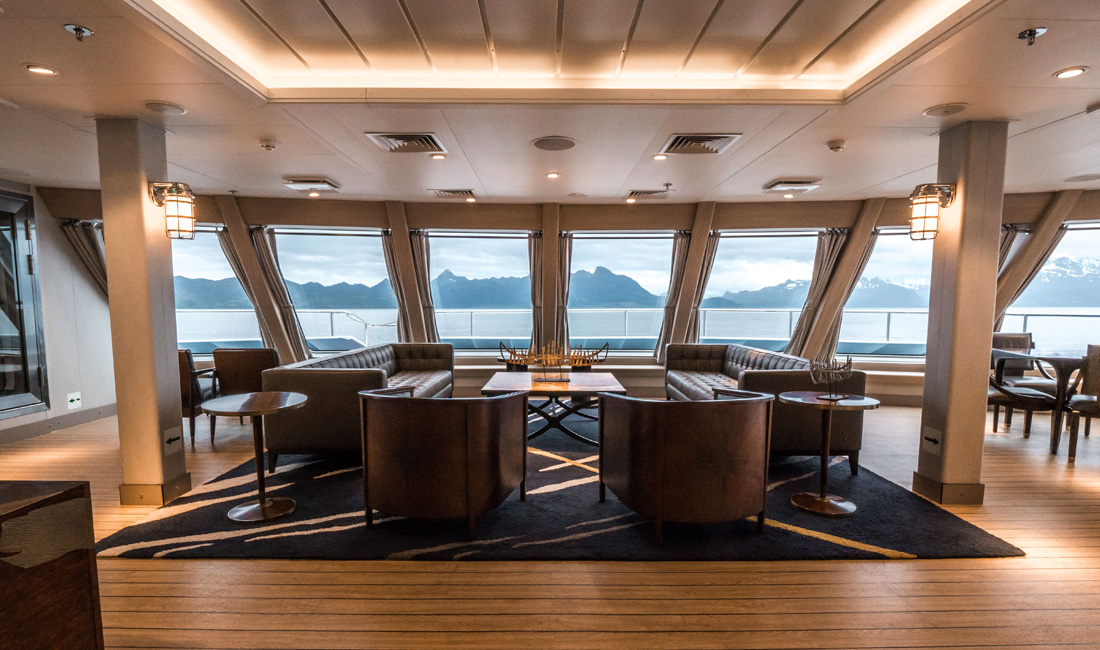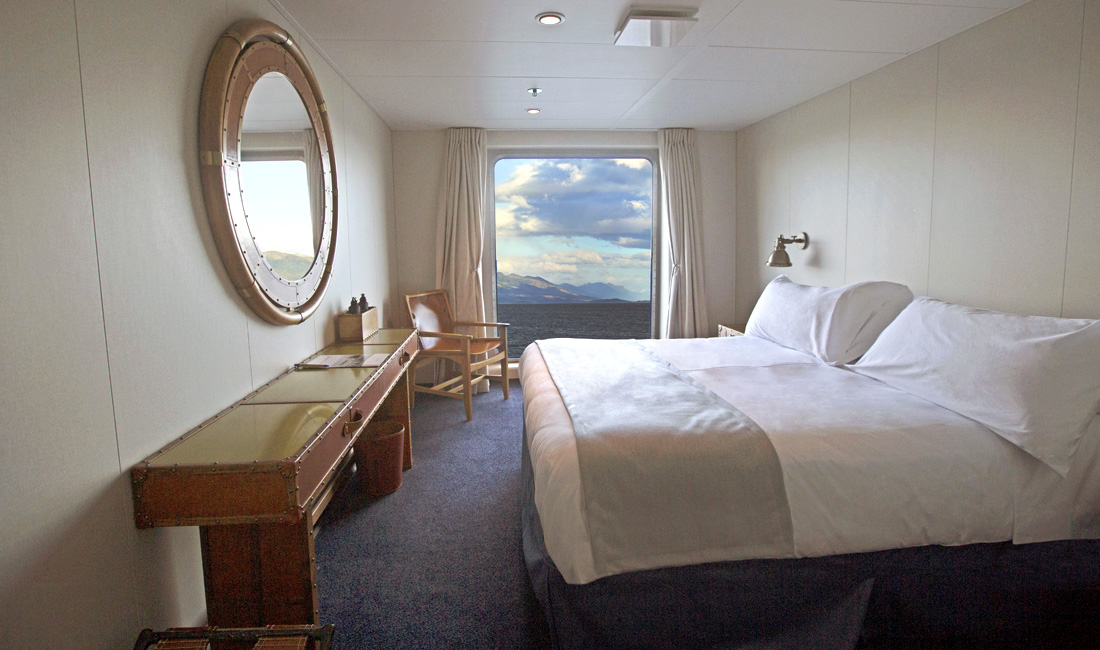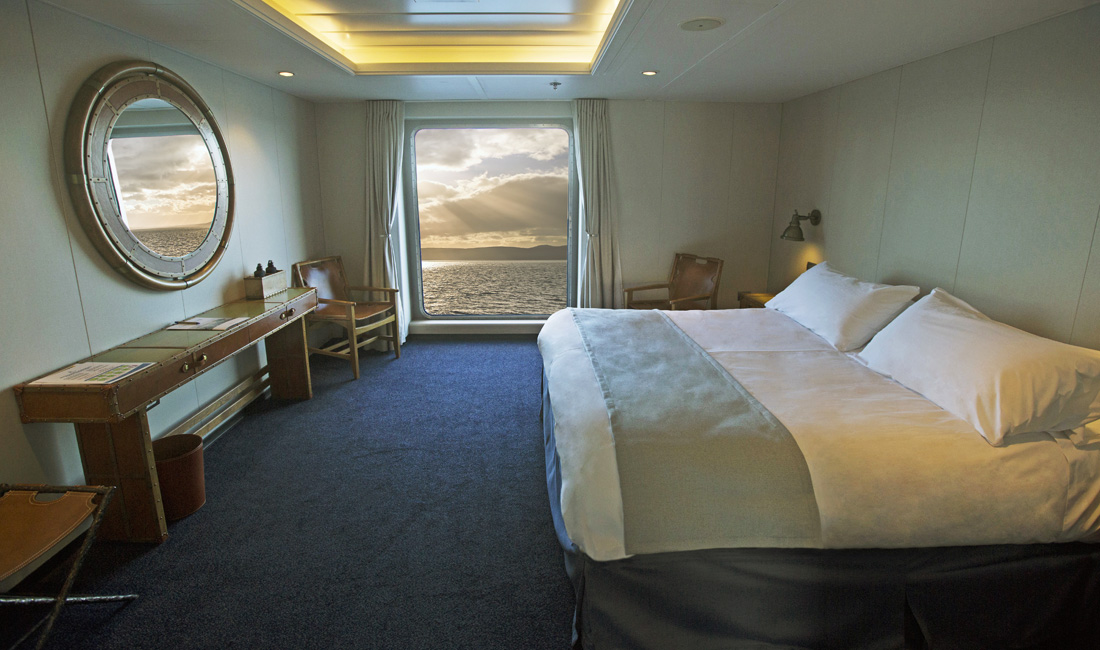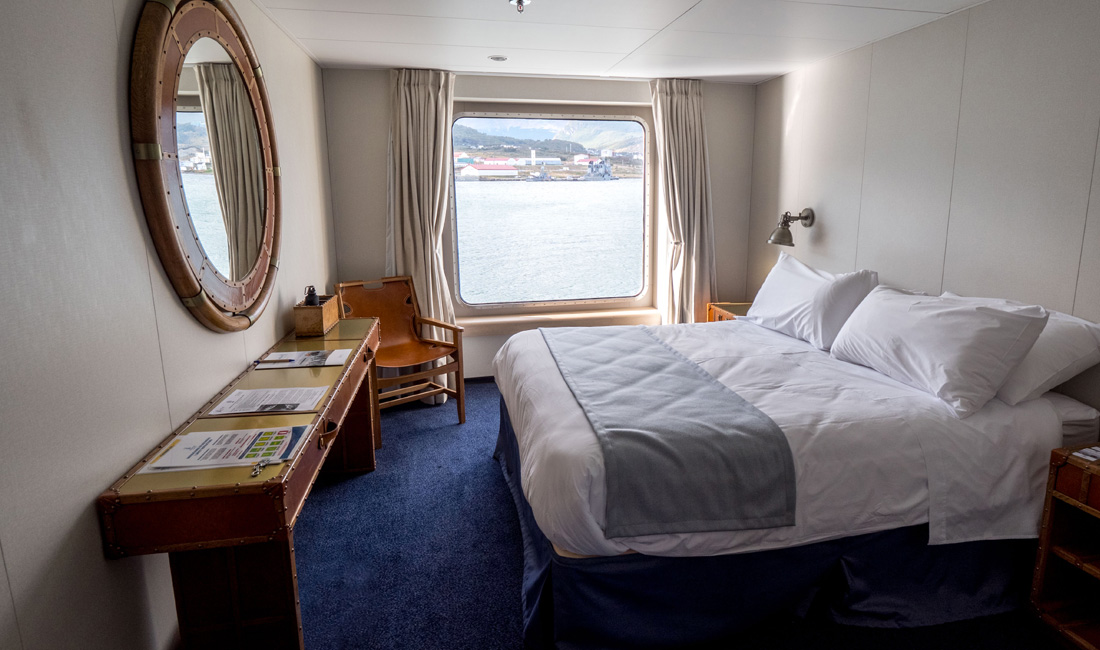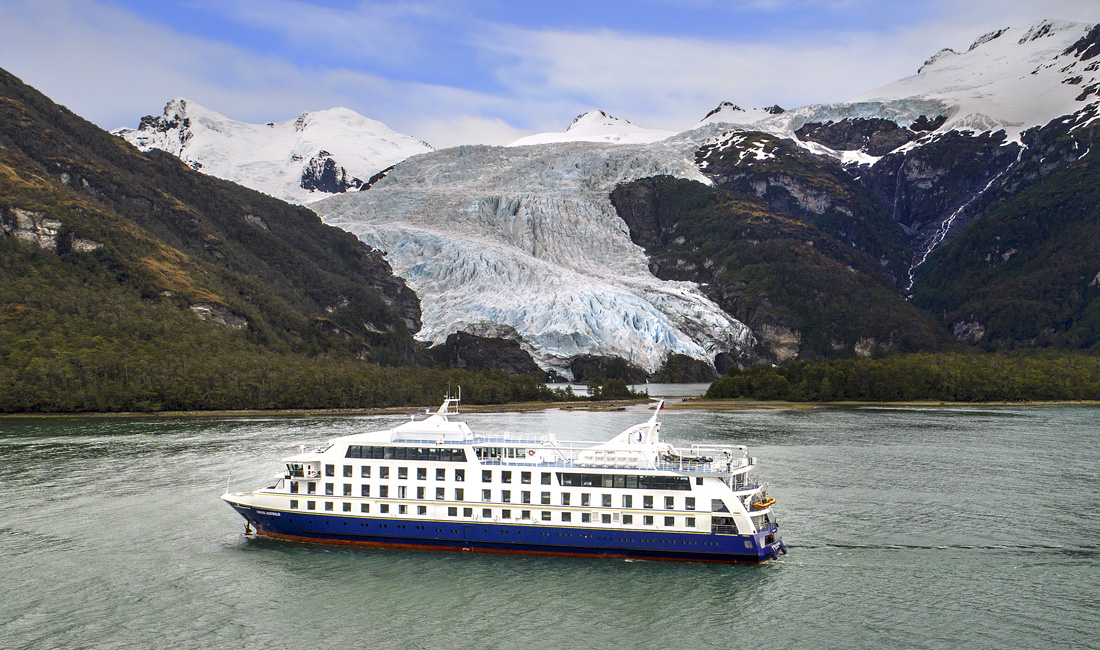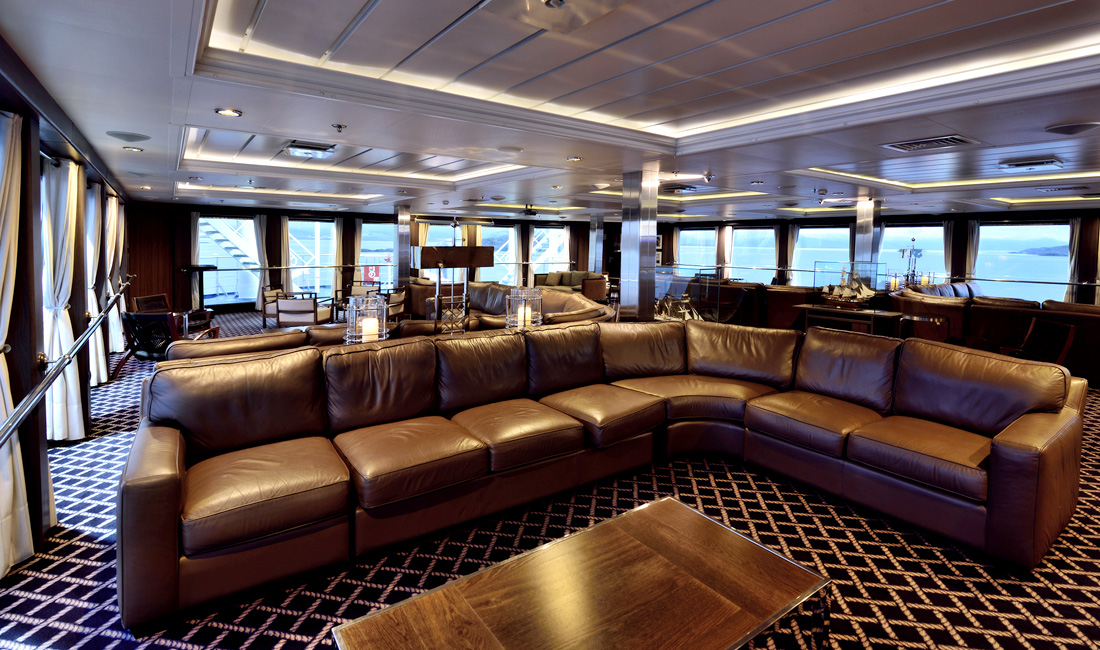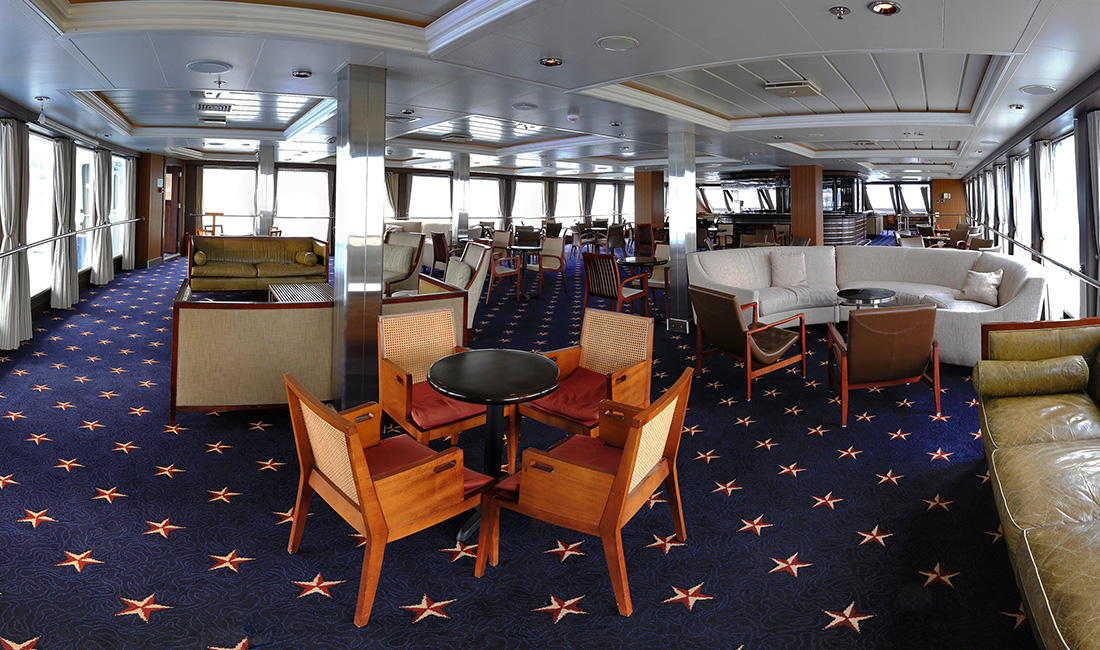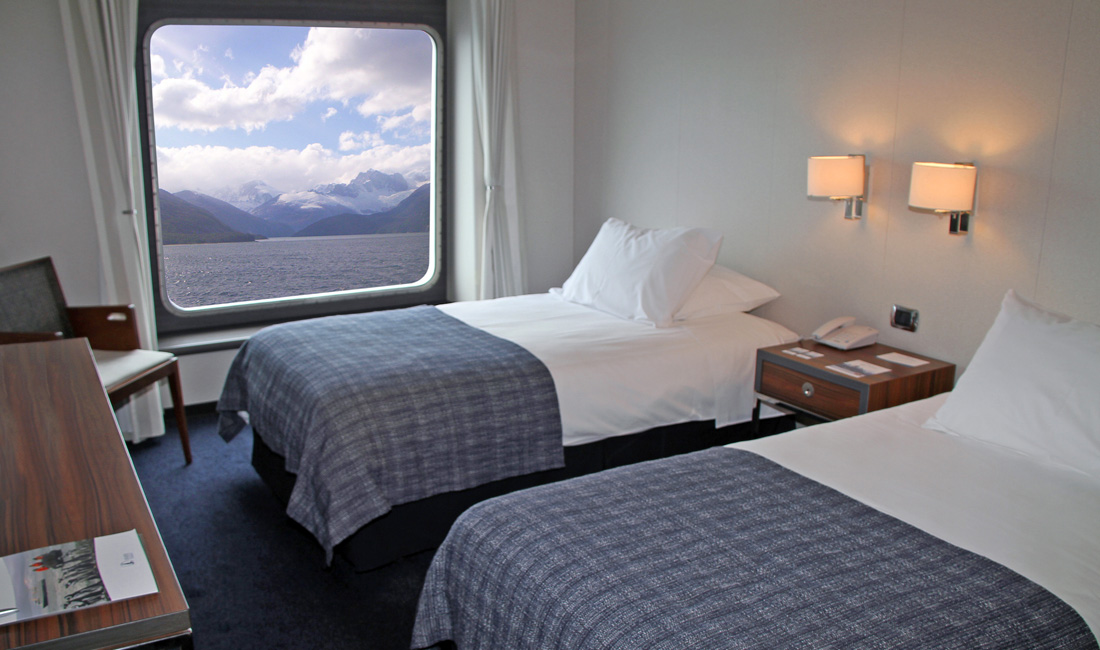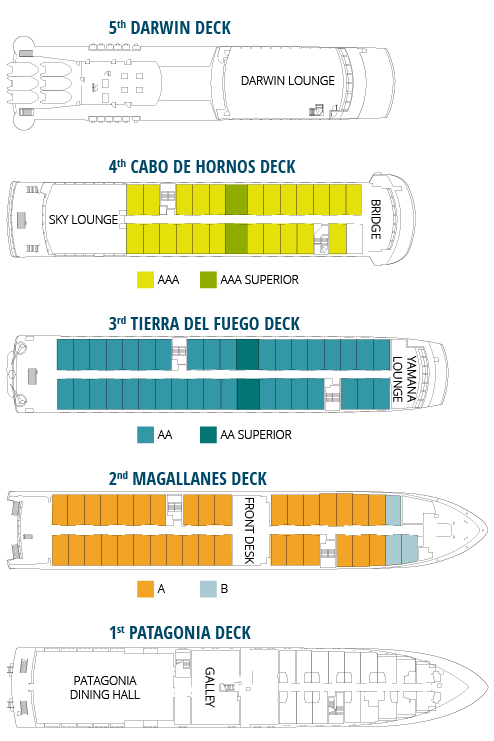Safe up to US $500 per person or US $1,000 per cabin on bookings for 2025/26 season.
Cape Horn Expedition Cruise
Cape Horn Expedition Cruise | In the Wake of Explorers and Sailors
Early Penguin Discount!
Expedition cruise to Patagonia, Tierra del Fuego and Cape Horn.
Cruise aboard the world-class M/V Stella Australis and M/V Ventus Australis cruises.
4-night cruises from Punta Arenas, Chile or Ushuaia, Argentina. Check out the updated tracks, dates and rates.
Cape Horn Expedition Cruise. The Straits of Magellan, Beagle Channel and Cape Horn are important and highly significant geographic and historical landmarks in the southern tip of the South American continent. Snow-capped mountains, huge glaciers and magnificent forests, all add to the peculiar beauty of this landscape of peaks, trees, fjords and remote islands sculpted by the strong westerly winds and the Pacific Ocean. During this journey we will sail through a significant part of the Straits of Magellan, learning about the fascinating history of the indigenous people and the explorers of the Fuegian fjords and channels, and following in the footsteps of Darwin aboard the HMS Beagle in the 1830s. We‘ll explore the cultural remnants of the world’s southernmost people, the Yamana, and learn how they survived and adapted to this extreme geography and climate. We’ll see active breeding colonies of penguins and sea lions, and enjoy the elegant flight of the majestic albatross. Finally, we shall reach the southernmost part of our journey at the mythical and feared Cape Horn. Sail with us in the wake of Cook, Darwin, Fitzroy and many other explorers. cape horn expedition cruise
Mt Bove, Tierra del Fuego, Chile © Claudio F. Vidal, Far South Expeditions
Trip Map
Detailed Itinerary, Dates & Rates
Route A: Fjords of Tierra del Fuego | 4-night cruise from Punta Arenas, Chile
Starts at Punta Arenas, Chile – Ends at Ushuaia, Argentina | 4-night cruise aboard M/V Stella Australis or M/V Ventus Australis.

Day 1 • Departure from Punta Arenas, Chile
Check in at 1385 O’higgins Street (Arturo Prat Port) between 13:00 and 17:00. Board at 18:00 (6 PM). After a welcoming toast and introduction of captain and crew, the ship departs for one of the remotest corners of planet Earth. During the night we cross the Strait of Magellan and enter the labyrinth of channels that define the southern extreme of Patagonia. The twinkling lights of Punta Arenas gradually fade into the distance as we enter the Whiteside Canal between Dawson Island and Isla Grande de Tierra del Fuego.
Overnight at M/V Stella Australis or M/V Ventus Australis (Dinner).
Day 2 • Ainsworth Bay (am) – Tucker Islets (*) (pm)
By dawn the ship is sailing up Admiralty Sound (Seno Almirantazgo), a spectacular offshoot of the Strait of Magellan that stretches nearly halfway across Tierra del Fuego. The snowcapped peaks of Karukinka Natural Park stretch along the north side of the sound, while the south shore is defined by the deep fjords and broad bays of Alberto de Agostini National Park. We go ashore at Ainsworth Bay, which harbors copious bird life and a colony of southern elephant seals which can sometimes be spotted from the Zodiacs. Two guided excursions are available: one is along the edge of a stream, peat bog and beaver habitat to a waterfall-and-moss-covered rock face tucked deep inside a pristine sub-polar forest; the other is a more strenuous hike along the crest of a glacial moraine. Both afford views of Marinelli Glacier and the Darwin Mountains. Leaving Ainsworth Bay behind, we sail west along the sound to the Tucker Islets. After lunch, we board the Zodiacs again for a close-up view of the Magellan penguins that inhabit the tiny islands. More than 4,000 penguins use Tucker as a place to nest, give birth and nurture their chicks. Many other bird species also frequent the area including king cormorants, oystercatchers, Chilean skuas, kelp geese, dolphin gulls, eagles and even the occasional Andean condor. In September and April — when the penguins live elsewhere — this excursion is replaced by a short walk to a glacier at nearby stunning Brookes Bay.
Overnight at M/V Stella Australis or M/V Ventus Australis (Breakfast, Lunch, Dinner)(Guides).
Day 3 • Pia Glacier (am) – Glacier Alley – Beagle Channel (**) (pm)
Overnight we sail around the western end of Tierra del Fuego via the very narrow Gabrial Channel, Magdalena Channel and Cockburn Channel. After rounding the remote Brecknock Peninsula, Stella Australis tacks eastward and enters the Beagle Channel again. By morning we are entering Pia Fjord and boarding the Zodiacs for a shore excursion to Pia Glacier. After disembarking we take a short hike to gain a panoramic view of the spectacular glacier, which extends from the mountaintops down to the sea or a longer much more difficult walk up a lateral moraine of the old Pia Glacier. No one knows for certain how the hulking mass of snow and ice got its feminine moniker, but one theory says it was named for Princess Maria Pia of Savoy (1847-1911), daughter of the Italian king. Back onboard the ship, we continue east along the Beagle Channel through an area called Glacier Alley. Living up to its name, the passage features a number of impressive tidewater glaciers flowing down from the Darwin Mountains and Darwin Ice Sheet on the north shore. Most of them named after European countries — Holland, Italy, Germany, Spain and France.
Overnight at M/V Stella Australis or M/V Ventus Australis (Breakfast, Lunch, Dinner)(Guides).
Day 4 • Cape Horn (am) – Wulaia Bay (pm)
During the early morning we navigate the narrow Murray Channel between Navarino and Hoste islands and drop anchor at historic Wulaia Bay, one of the few places in the archipelago where the human history is just as compelling as the natural environment. Originally the site of one of the region’s largest Yámana aboriginal settlements, the bay was described by Charles Darwin and sketched by Captain FitzRoy in the 1830s during their voyages on the HMS Beagle. This area is also renowned for its mesmerizing beauty and dramatic geography. After a visit to the Australis-sponsored museum in the old radio station — which is especially strong on the Yámana people and European missionaries in the area — passengers have a choice of three hikes (of increasing degrees of difficulty) that ascend the heavily wooden mountain behind the bay. On all of these you will be strolling through an enchanted Magellan forest of lengas, coigües, canelos, ferns, and other endemic fauna to reach a panoramic viewpoint overlooking the bay. Before leaving Wulaia Bay, drop something into the wooden mail barrel inside the museum – letters or postcards meant to be hand delivered by future travelers – an ancient mariner tradition revived by Australis. In the afternoon we cruise across Nassau Bay into the remote archipelago that includes Cape Horn National Park. Weather and sea conditions permitting, we shall go ashore on the windswept island that harbors legendary Cape Horn (Cabo de Hornos). Discovered in 1616 by a Dutch maritime expedition — and named after the town of Hoorn in West Friesland — Cape Horn is a sheer 425-meter (1,394-foot) high rocky promontory overlooking the turbulent waters of the Drake Passage. For many years it was the only navigation route between the Pacific and Atlantic, and was often referred to as the “End of the Earth.” The park was declared a World Biosphere Reserve by UNESCO in 2005. The Chilean navy maintains a permanent lighthouse on the island, staffed by a lightkeeper and his family, as well as the tiny Stella Maris Chapel and modern Cape Horn Monument.
Overnight at M/V Stella Australis or M/V Ventus Australis (Breakfast, Lunch, Dinner)(Guides).
Day 5 • Arrival to Ushuaia, Argentina
The following morning we sail into Argentine waters and dock in Ushuaia, the world’s southernmost city. Australis is scheduled to arrive at 8:30 or 9:30 AM depending on the date of departure. (Breakfast)
* In September and April this excursion is replaced with Brookes Glacier
** Not an excursion; ship-based sightseeing excursion
NOTE: The excursions described in the itineraries can usually be carried out without any problems. Nevertheless, the shipowner holds the right to alter, change or skip certain portions of the itinerary without prior notice, whether motivated by the passengers’ well-being and safety, by the appropriate protection of the environment, or in case of any extraordinary event, unforeseeable circumstance or force majeure. For this reason, departures or arrival may be subject to change. Furthermore, sighting of birds and other species cannot be guaranteed as their exact location is variable by nature.
Route B: Patagonian Explorer | 4-night cruise from Ushuaia, Argentina
Starts at Ushuaia, Argentina – Ends at Punta Arenas, Chile | 4-night cruise aboard M/V Ventus Australis.

Day 1 • Ushuaia, Argentina
Check in at the Australis travel center at Juan Manuel de Rosas 160 Street in downtown Ushuaia between 10:00 and 17:00 (10 AM-5 PM) on the day of your cruise departure. Board the M/V Ventus Australis at 18:00 (6:00PM). After a welcoming toast and introduction of captain and crew, the ship departs for one of the most remote corners of planet Earth. During the night we traverse the Beagle Channel and cross from Argentine into Chilean territorial waters. The lights of Ushuaia disappear as we turn into the narrow Murray Channel between Navarino and Hoste islands.
Overnight at M/V Ventus Australis (Dinner).
Day 2 • Cape Horn – Wulaia Bay
By early morning, Ventus Australis is cruising across Nassau Bay into the remote archipelago that includes Cape Horn National Park. Weather and sea conditions permitting, we shall go ashore on the windswept island that harbors legendary Cape Horn (Cabo de Hornos). Discovered in 1616 by a Dutch maritime expedition — and named after the town of Hoorn in West Friesland — Cape Horn is a sheer 425-meter (1,394-foot) high rocky promontory overlooking the turbulent waters of the Drake Passage. For many years it was the only navigation route between the Pacific and Atlantic, and was often referred to as the “End of the Earth.” The park was declared a World Bios- phere Reserve by UNESCO in 2005. The Chilean navy maintains a permanent lighthouse on the island, staffed by a lightkeeper and his family, as well as the tiny Stella Maris Chapel and modern Cape Horn Monument. Sailing back across Nassau Bay, we anchor at fabled Wulaia Bay, one of the few places in the archipelago where the human history is just as compelling as the natural environment. Originally the site of one of the region’s largest Yámana aboriginal settlements, the bay was described by Charles Darwin and sketched by Captain FitzRoy in the 1830s during their voyages on the HMS Beagle. This area is also renowned for its mesmerizing beauty and dramatic geography. After a visit to the Australis-sponsored museum in the old radio station — which is especially strong on the Yámana people and European missionaries in the area — passengers have a choice of three hikes (of increasing degrees of difficulty) that ascend the heavily wooden mountain behind the bay. On all of these you will be strolling through an enchanted Magellan forest of lengas, coigües, canelos, ferns, and other endemic fauna to reach a panoramic viewpoint overlooking the bay. Before leaving Wulaia Bay, drop something into the wooden mail barrel inside the museum – letters or postcards meant to be hand delivered by future travelers – an ancient mariner tradition revived by Australis.
Overnight at M/V Ventus Australis (Breakfast, Lunch, Dinner)(Guides).
Day 3 • Pia Glacier – Garibaldi Glacier
Casting off from Wulaia Bay, we retrace our route to the Beagle Channel and sail westward along the southern edge of Tierra del Fuego into a section of Alberto de Agostini National Park called Glacier Alley or Avenue of the Glaciers. Flowing down from the Darwin Mountains and Darwin Ice Sheet are a number of impressive tidewater glaciers, most of them named after European countries — Holland, Italy, Germany, Spain and France. In amongst this frozen league of nations we enter the narrow Pia Fjord and board the Zodiacs for a shore excursion to Pia Glacier. No one knows for certain how the hulking glacier got its feminine moniker, but one theory says it was named for princess Maria Pia of Savoy (1847-1911), daughter of the Italian king. After disembarking we take a short hike to gain a panoramic view of the spectacular glacier, which extends from the mountaintops down to the sea or a longer much more difficult walk up a lateral moraine of the old Pia Glacier. Making our way further west along the Beagle Channel, we enter another long fjord and drop anchor near Garibaldi Glacier for another shore excursion. Garibaldi is one of only three glaciers in Patagonia gaining mass rather than staying the same or slowly shrinking. This time we hike through virgin Magellanic forest to a glacial waterfall, a towering wall of ferns and moss, and spectacular viewpoints looking down on the glacier and fjord. The walk is demanding — very steep, negligible trail, rough footing — and not for everyone. For those who choose to stay onboard, our captain will point the bow towards the beautiful sky blue Garibaldi Glacier so everyone can enjoy the panoramic view from the upper decks.
Overnight at M/V Ventus Australis (Breakfast, Lunch, Dinner)(Guides).
Day 4 • Piloto and Nena Glaciers – De Agostini Sound – Aguila Glacier
Early in the morning, we will sail through the Cockburn Channel and enter Agostini Sound. From there it is possible to see the glaciers that descend from the middle of the Darwin Mountain Range — some of them reaching the water. This morning, we will disembark and go for an easy walk around a lagoon, which was formed by the melting of the Aguila Glacier. We will reach a spot right in front of that glacier with stunning views. In the afternoon, we will approach the Condor Glacier via Zodiac — and hopefully see some of the abundant Andean Condors in the area.
Overnight at M/V Ventus Australis (Breakfast, Lunch, Dinner)(Guides).
Day 5 • Magdalena Island* – Punta Arenas, Chile
After an overnight cruise that takes us back into the Strait of Magellan, we anchor off Magdalena Island, which lies about halfway between Tierra del Fuego and the Chilean mainland. Crowned by a distinctive lighthouse, the island used to be an essential source of supplies for navigators and explorers and is inhabited by an immense colony of Magellanic penguins. At the break of dawn, weather permitting, we go ashore and hike a path that leads through thousands of penguins to a small museum lodged inside the vintage 1902 lighthouse. Many other bird species are also found on the island. In September and April — when the penguins dwell elsewhere — this excursion is replaced by a ride aboard Zodiacs to Marta Island to observe South American sea lions.
After a short sail south along the strait, disembarkation at Punta Arenas is scheduled for around 11:30 AM. (Breakfast)
(*) In September and April this excursion is replaced with Marta Island.
NOTE: The excursions described in the itineraries can usually be carried out without any problems. Nevertheless, the shipowner holds the right to alter, change or skip certain portions of the itinerary without prior notice, whether motivated by the passengers’ well-being and safety, by the appropriate protection of the environment, or in case of any extraordinary event, unforeseeable circumstance or force majeure. For this reason, departures or arrival may be subject to change. Furthermore, sighting of birds and other species cannot be guaranteed as their exact location is variable by nature.
Dates - Route A
Route A | Punta Arenas, Chile - Ushuaia, Argentina | ||||
Trip Name | Fjords of Tierra del Fuego | ||||
Trip Length | 5 days, 4 nights | ||||
M/V Ventus Australis |
|||||
2024 | September | 21 | 29 |
||
October | 7 | 15 | 23 | 31 |
|
November | 8 | 16 | 24 | - | |
December | 2 | 10 | 18 | 26 |
|
2025 | January | 3 | 11 | 19 | 27 |
February | 4 | 12 | 20 | 28 |
|
March | 8 | 16 | 24 | - | |
April | 1 | - | - | - | |
M/V Stella Australis |
|||||
2024 | October | - | - | 19 | 27 |
November | 4 | 12 | 20 | 28 |
|
December | 6 | 14 | 22 | 30 |
|
2025 | January | 7 | 15 | 23 | 31 |
February | 8 | 16 | 24 | - | |
March | 4 | 12 | 20 | - | |
Route A | Punta Arenas, Chile - Ushuaia, Argentina | ||||
Trip Name | Fjords of Tierra del Fuego | ||||
Trip Length | 5 days, 4 nights | ||||
M/V Ventus Australis |
|||||
2025 | September | 22 | 30 |
||
October | 8 | 16 | 24 | - | |
November | 1 | 9 | 17 | 25 |
|
December | 3 | 11 | 19 | 27 |
|
2026 | January | 4 | 12 | 20 | 28 |
February | 5 | 13 | 21 | - | |
March | 1 | 9 | 17 | 25 |
|
April | 2 | - | - | - | |
M/V Stella Australis |
|||||
2025 | October | - | - | 20 | 28 |
November | 5 | 13 | 21 | 29 |
|
December | 7 | 15 | 23 | 31 |
|
2026 | January | 8 | 16 | 24 | - |
February | 1 | 9 | 17 | 25 |
|
March | 5 | 13 | 21 | - | |
Dates - Route B
Route B | Ushuaia, Argentina - Punta Arenas, Chile | ||||
Trip Name | Patagonian Explorer | ||||
Trip Length | 5 days, 4 nights | ||||
M/V Ventus Australis |
|||||
2024 | September | - | - | - | 25 |
October | 3 | 11 | 19 | 27 |
|
November | 4 | 12 | 20 | 28 |
|
December | 6 | 14 | 22 | 30 |
|
2025 | January | 7 | 15 | 23 | 31 |
February | 8 | 16 | 24 | - | |
March | 4 | 12 | 20 | 28 |
|
April | 5 | - | - | - | |
M/V Stella Australis |
|||||
2024 | October | - | - | 23 | 31 |
November | 8 | 16 | 24 | - | |
December | 2 | 10 | 18 | 26 |
|
2025 | January | 3 | 11 | 19 | 27 |
February | 4 | 12 | 20 | 28 |
|
March | 8 | 16 | 24 | - | |
Route B | Ushuaia, Argentina - Punta Arenas, Chile | ||||
Trip Name | Patagonian Explorer | ||||
Trip Length | 5 days, 4 nights | ||||
M/V Ventus Australis |
|||||
2025 | September | - | - | - | 26 |
October | 4 | 12 | 20 | 28 |
|
November | 5 | 13 | 21 | 29 |
|
December | 7 | 15 | 23 | 31 |
|
2026 | January | 8 | 16 | 24 | - |
February | 1 | 9 | 17 | 25 |
|
March | 5 | 13 | 21 | 29 |
|
April | 6 | - | - | - | |
M/V Stella Australis |
|||||
2025 | October | - | - | 24 | - |
November | 1 | 9 | 17 | 25 |
|
December | 3 | 11 | 19 | 27 |
|
2026 | January | 4 | 12 | 20 | 28 |
February | 5 | 13 | 21 | - | |
March | 1 | 9 | 17 | 25 |
|
Rates
Season/Cabin Type | B | A | AA | AAA | AAS | AAAS |
Promotional | $1,665 | $2,265 | $2,465 | $2,665 | $3,165 | $3,365 |
Low Season | $2,373 | $3,175 | $3,475 | $3,775 | $4,175 | $4,475 |
High Season | $3,255 | $4,455 | $4,755 | $5,155 | $6,155 | $6,655 |
Season/Cabin Type | B | A | AA | AAA | AAS | AAAS |
Promotional | $1,695 | $2,315 | $2,515 | $2,715 | $3,225 | $3,435 |
Low Season | $2,466 | $3,296 | $3,596 | $3,896 | $4,356 | $4,646 |
High Season | $3,357 | $4,607 | $4,907 | $5,307 | $6,407 | $6,927 |
Early Penguin Discount
Promotion valid for new bookings made between March 18, 2025, and May 16, 2025 or until availability runs out (10 cabins per departure).
Valid only for departures in the 2025-2026 season.
The US$300 per person deposit must be paid in full within 10 days of booking.
The reservation must be fully paid by May 30, 2025.
Only applicable for A, AA, AAA, and Superior cabins (Category B cabins are excluded).
Applies to the regular per-person rate, based on double occupancy per cabin.
Please inquire about applicable discounts for single occupancy, children, infants, or additional beds.
Valid only for one-way routes (4 nights).
Please inquire about rates and availability for round-trip routes (8 nights).
Port fees** are not included in the ticket price (they must be paid separately), and their cost for the 25-26 season is US$135 (4 nights) and US$150 (8 nights).
Gratuities (voluntary) are not included; a recommended amount is US$25 per person per night.
Not combinable with other promotions or benefits.
Landings and excursions are subject to weather conditions.
Our Fare Conditions operate as stipulated on our website www.australis.com. The company reserves the right to modify and/or supplement its Fare Conditions without prior notice.
** Port fees correspond to government port charges, taxes, and National Park fees.
What the trip includes/excludes
Rates are per person• in US Dollar • double occupancy of the cabin
Rates include all meals, open bar when the bartender is on duty, daily shore excursions as scheduled by the company, whiskey and hot chocolate during excursions, activities on board.
Rates exclude port taxes (2024/25: 120 USD per person; 2025/26: 135 USD per person), optional tours and transportation, entrance fees to Chile and Argentina, tipping.
M/V Ventus Australis & M/V Stella Australis
With spacious cabins, all of which overlook the exterior, both ships have been carefully decorated, offering maximum interior comfort and spectacular views from virtually all parts of the ship.
M/V Stella Australis
Built: 2010
Cabins: 100 cabins, with private facilities, low beds and panoramic windows.
• B Cabins: 3
• A Cabins: 34
• AA Cabins: 36
• AAA Cabins: 23
• AA Superior Cabins: 2
• AAA Superior Cabins: 2
Passenger capacity: 210
Decks: 5
Lounges: 3 lounges and one dining room.
Length: 236 ft. • 71,83 m
Draft: 10,3 ft. • 3,15 m
Breadth: 44 ft. • 13,4 m
Deck & Cabin Plan
Twin Cabin
16,5 m2 / 177 sq. ft

Double Bed Cabin
16,5 m2 / 177 sq. ft.
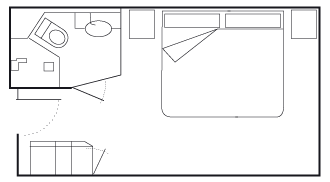
Superior Cabin
20,5 m2 / 220 sq. ft.

M/V Ventus Australis
Built: 2017
Cabins: 100 cabins, with private facilities, low beds and panoramic windows.
• B Cabins: 3
• A Cabins: 34
• AA Cabins: 36
• AAA Cabins: 23
• AA Superior Cabins: 2
• AAA Superior Cabins: 2
Passenger capacity: 210
Decks: 5
Lounges: 3 lounges and one dining room.
Length: 236 ft. • 71,83 m
Draft: 10,3 ft. • 3,15 m
Breadth: 44 ft. • 13,4 m
Tour Registration
To register for this tour, complete our online registration form and return it with a deposit of US$ 500 per person. Full payment of the tour fee (in US Dollars) is due 90 days prior to tour departure.
Cancellation Policy
Notice of cancellation can only be accepted IN WRITING from the person who signed the booking form and takes effect on the day such noticed is received by us.
Refunds are made according to the following schedule:
• If cancellation is made 120 days or more before departure date, the deposit less US$ 250 is refundable.
• If cancellation is made between 120 and 60 days before departure, the deposit is not refundable, but any payments covering the balance of the fee will be refunded.
• If cancellation is made fewer than 60 days before departure date, no refund is available.
This policy and fee schedule also applies to pre-trip and post trip extensions, as well as any transfers from one tour to another. We strongly recommend the purchase of trip cancellation insurance to protect yourself.

